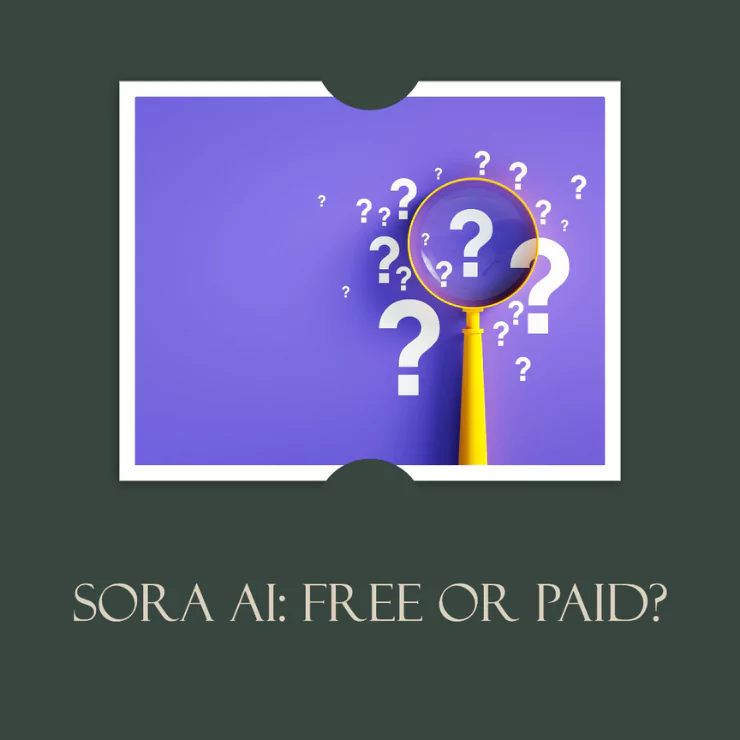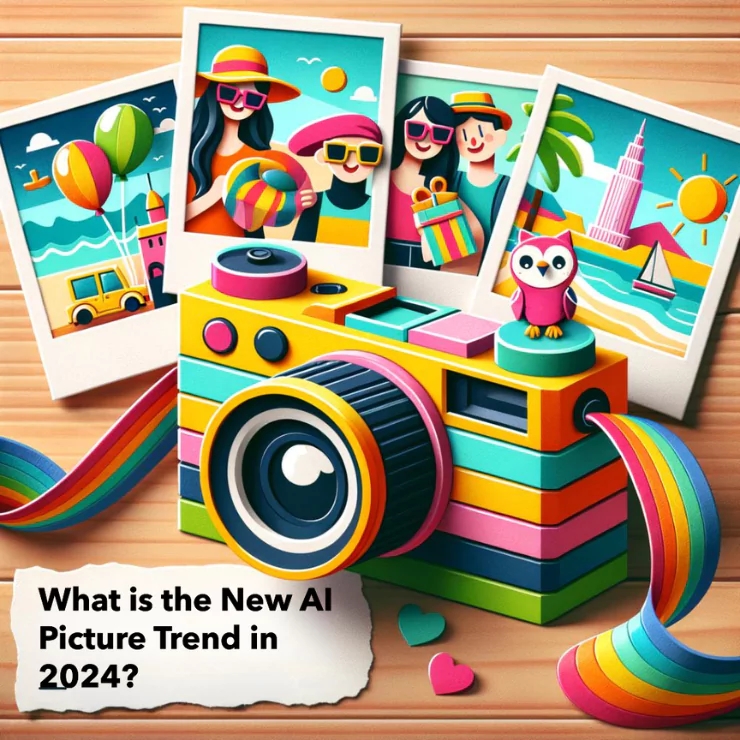Introduction: Are AI generated images free for commercial use?
Artificial Intelligence (AI), a ground-breaking technological advancement, is revolutionizing a wide range of industries, chief among which is image creation. This revolutionary technology has facilitated a new paradigm shift in photo editing and image generation fields, underscored by the emergence of dynamic and inventive platforms like ZMO.AI. The transformative impact of AI on these industries is profound, reshaping established boundaries, and birthing innovative techniques and solutions to meet modern-day digital requirements.

Article Outline
“Are AI Generated Images Free for Commercial Use?”
- Introduction: AI-Powered Image Creation
- Decoding ZMO.AI
- AI-Generated Images: When is Commercial Use Allowed?
- Treading the Legal and Ethical Terrain
- ZMO.AI’s Approach to Commercial Use
- Licensing: The Key
- Potential Implications for eCommerce Businesses
- Tactics for Using AI Tech More Effectively in eCommerce
- Learning the Lingo: Understanding Different Licensing Terms
- Real-World Applications and Case Studies
- Pitfalls to Avoid
- Looking Ahead: The Future of AI-Generated Images in eCommerce
- Conclusion: Piecing It All Together
- FAQs
Decoding ZMO.AI
ZMO.AI is an exceptional AI-Generated Content Engine providing a wide range of unique, powerful features to its users. This online platform offers a host of capabilities, one of which involves creating astonishing images. Leveraging cutting-edge AI technologies, it facilitates the generation of visually striking and contextually rich graphics, all aligned with the user’s specific needs.
In addition, ZMO.AI excels in offering capabilities around photo editing, including the seamless removal of backgrounds. This function can be incredibly helpful in many instances, particularly for professional photo editors and graphic designers. Beyond just removing backgrounds, it can eradicate unwanted elements within the photograph, giving users the flexibility and control to achieve the desired outcome on every image. This combination of creation and editing tools makes ZMO.AI a standout option in the AI-driven content generation landscape.



AI-Generated Images: When is Commercial Use Allowed?
The legal landscape for the commercial use of AI-generated images can be complex. Acceptability is generally dependent on the policy of the platform used to create the image.
Treading the Legal and Ethical Terrain
Legal and ethical considerations represent an essential factor in using AI-generated images for commercial purposes. Different regions globally have discrete standards and norms that govern the utilization of such advancements. Therefore, it is indispensable for companies to fully understand and comply with these regional rules and regulations to avoid any legal implications. Legal nuances such as these require entrepreneurs to be proactive concerning their knowledge of the acceptable use of AI technology within their business environments, safeguarding them from potential lawsuits or fines.
Moreover, issues related to copyright laws associated with AI-generated images pose unique challenges. Copyright laws are designed to protect the intellectual property of creators, and when AI is the creator, it creates a gray area that is still being navigated worldwide. This can lead to conflicts concerning image rights and usage, especially when used for commercial purposes. As such, businesses employing AI-generated imagery should ensure they understand current copyright laws, obtain necessary permissions, and employ good practices to respect the copyright and intellectual property rights of any potentially impacted parties.
ZMO.AI’s Approach to Commercial Use
ZMO.AI is user-friendly, offering a fair platform policy that provides users with clear usage rights, transparency being its USP.



Licensing: The Key
Gaining a deep understanding of licensing terms may initially appear to be a daunting task, but it’s significantly important in many businesses and industries. These terms and conditions, regardless of how difficult they might be to comprehend, form the basis of how different entities are able to use various products or services. They carry weighty legal implications that go beyond the surface level of simply using something.
Specifically, these licensing terms present a wide range of options, allowing for varying degrees of usage rights. The extent of these rights broadly differ from one license to the other, and as such, it would be beneficial to acquaint oneself with the intricacies of these agreements. What’s permissible under one license may be outright forbidden under another, and the consequences of this oversight can be severe.
This dynamic nature of licensing terms directly impacts how a business can utilize images, for instance. The way an organization is permitted to use an image – whether for marketing, product design, website development or other commercial purposes – hinges entirely on the allowances of these licensing terms.
Every image might come with its own set of licensing terms that dictate its usage. The terms under which one image can be used can be drastically different from those attached to another. This element of difference underscores the importance of thoroughly understanding these terms before incorporating the image into the business’s operations or strategy.
Consequently, knowing the ins and outs of licensing terms not only becomes a matter of due diligence but an integral component of strategic decision-making. Therefore, even though challenging, a comprehensive understanding of licensing terms is undeniably crucial, particularly when it comes to how businesses are able to use and implement images in various contexts.
Potential Implications for eCommerce Businesses
eCommerce businesses utilizing AI-generated images must consider numerous factors. These include licensing terms, commercial use policies, origin of images, and respectful use of AI tools in accordance with law.



Tactics for Using AI Tech More Effectively in eCommerce
AI tools like ZMO.AI offer a wealth of potential for eCommerce. The ‘Magic Remove’ feature, for instance, allows businesses to create more appealing product images by removing distracting elements.
Learning the Lingo: Understanding Different Licensing Terms
Understanding licensing terms can be challenging but vital. Varying terms allow different usage rights, influencing how businesses can utilize images.
Real-World Applications and Case Studies
Many businesses already leverage AI-generated images to enhance their product listings, marketing materials, and overall web presence.
Pitfalls to Avoid
Violation of copyright laws and platform policies are among the key pitfalls to avoid when using AI-generated images for commercial purposes.



Looking Ahead: The Future of AI-Generated Images in eCommerce
With advancements in AI, the use of AI-generated images will likely gain more traction in eCommerce for numerous applications, such as product visualizations, ad creation, and more.
Conclusion: Piecing It All Together
AI-generated images have emerged as a significant innovation in the digital realm, with promising aspects ranging from graphical design to branding, advertising, and beyond. Their ability to produce unique and intricate visuals, tuned to specific requirements can provide incredible utility. Yet, these automated creations are not detached from the everyday rules that govern the digital media space.
Indeed, a vital aspect of making use of AI-generated images, especially for commercial purposes, is the respect for established usage rights and licensing terms. As with traditional digital imagery, the intellectual property rights surrounding AI-generated images need to be respected. This compatibility with IP laws, copyright rules, and fair use policies assures that both the users and creators of AI technologies operate within a lawful, ethical framework.
In brief, as we venture further into embracing the capabilities of AI in image generation, yielding fantastic new tools and creative possibilities, it’s absolutely essential to remain mindful of the legal implications. Respecting usage rights and licensing terms will ensure the responsible and fair exploitation of this exciting technology, thereby paving the way towards a harmonious blend of AI innovation and digital rights management.
FAQs
Q: Who owns the copyright to AI-generated images?
A: As of my knowledge cut-off in September 2021, this is still a legally ambiguous area in many jurisdictions. It typically depends on the specific laws of a country. In some places, the person who created the AI might hold the copyright, while in others, the AI-generated image may be considered public domain.
Q: Can I use AI-generated images for commercial purposes?
A: The usage of AI-generated images for commercial purposes largely depends on the terms of service of the AI tool used. Some AI tools grant users extensive rights to the images created, while others might limit commercial use. Always check the provider’s licensing agreement.
Q: What are the ramifications of ignoring licensing terms for AI-generated images?
A: Ignoring licensing terms for AI-generated images can lead to legal consequences, including copyright infringement lawsuits. It is crucial to always respect licensing agreements when using AI-generated images.
Q: How can I ensure I am using AI-generated images legally?
A: To ensure you’re using AI-generated images legally, check the terms of use, agreement, or license for the specific tool you’re using. If the terms aren’t clear, consult with a legal professional.




